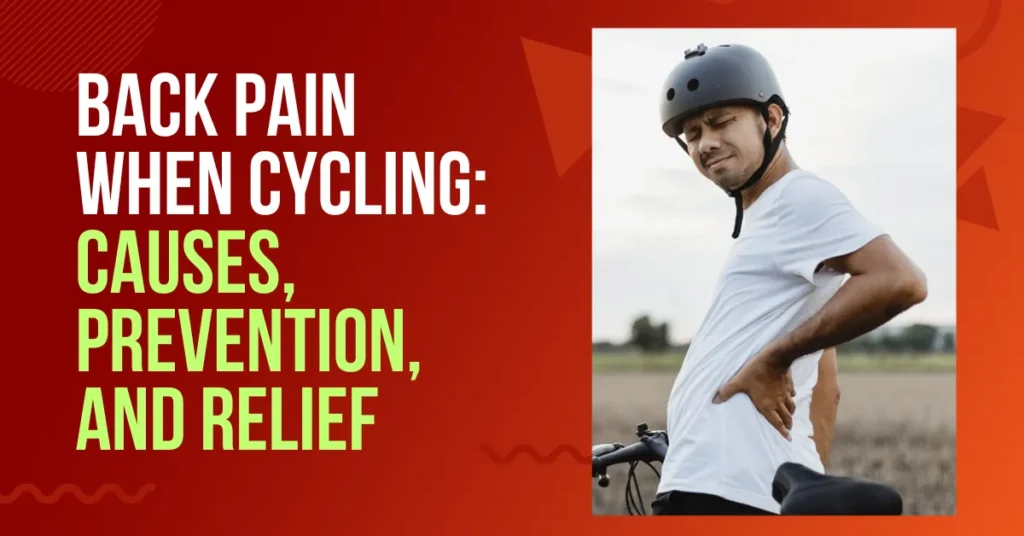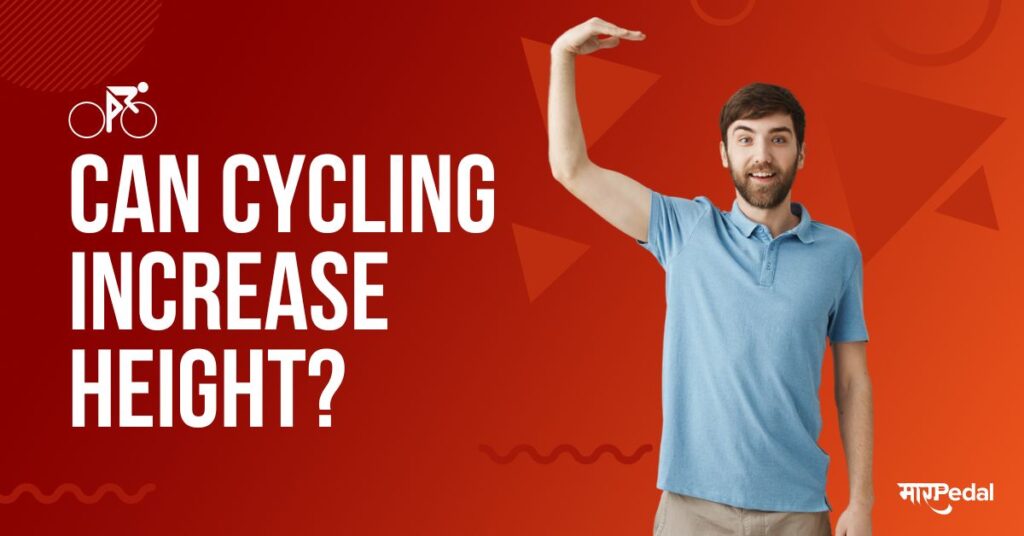
Cycling is a popular form of exercise and transportation that offers numerous health benefits. However, many cyclists experience back pain at some point during their cycling journey. Back pain when cycling can be a frustrating and uncomfortable experience, but understanding its causes and implementing preventive measures can help alleviate this issue.
In this article, we will explore the common causes of back pain when cycling, provide tips for prevention and suggest effective methods for finding relief.
Understanding Back Pain
What is back pain?
Back pain refers to discomfort or pain felt in the area between the neck and hips, known as the back. It can range from mild to severe and may be acute or chronic in nature.
Common causes of back pain
Back pain can be caused by various factors, including muscle strains, ligament sprains, herniated discs, and spinal abnormalities. Additionally, poor posture, a sedentary lifestyle, and a lack of exercise can contribute to back pain.
Back Pain When Cycling

Why does cycling cause back pain?
Cycling involves a repetitive motion that can put stress on the back and spine. The combination of bending forward, supporting body weight, and absorbing road vibrations can lead to back pain.
Identifying the type of back pain experienced while cycling
Back pain when cycling can be categorized into two types: lower back pain and upper back/neck pain. Lower back pain is more common and is often caused by poor bike fit, improper posture, or weak core muscles. Upper back and neck pain can result from neck hyperextension, hunching over the handlebars, or prolonged strain on the upper back muscles.
See also: What Muscles Are Worked When Cycling? Beyond The Legs
Causes of Back Pain When Cycling
Incorrect bike fit and posture
A bike that is not properly adjusted to fit your body proportions can lead to back pain. Incorrect saddle height, handlebar position, or frame size can strain the back and cause discomfort. Poor posture while cycling, such as rounding the back or arching the neck excessively, can also contribute to back pain.
Weak core muscles
The core muscles play a crucial role in supporting the spine and maintaining proper posture. Weak core muscles can result in increased stress on the back while cycling, leading to pain and discomfort.
Overuse and repetitive stress
Cycling long distances or engaging in intense training without proper rest can lead to overuse injuries and back pain. The repetitive motion of pedaling and the constant vibration from the road can put strain on the back muscles and structures.
Inadequate warm-up and cool-down routines
Skipping warm-up exercises and neglecting to cool down after a ride can increase the risk of back pain. Proper warm-up activities prepare the muscles for the demands of cycling, while cooling down helps reduce muscle tension and prevent stiffness.
Preventing Back Pain When Cycling

Getting a professional bike fitting
Consulting a professional bike fitter can ensure that your bike is adjusted correctly to fit your body. They will assess your body measurements, flexibility, and riding style to optimize your bike setup and minimize the risk of back pain.
Maintaining proper posture
Maintaining a neutral spine position and proper posture while cycling is essential for preventing back pain. Engage your core muscles, relax your shoulders, and keep your back straight while riding.
Strengthening core muscles
Incorporate exercises that target the core muscles into your training routine. Strengthening the abdominal, back, and hip muscles can provide better support for the spine and reduce the likelihood of back pain.
Incorporating cross-training exercises
Engaging in cross-training activities such as swimming, yoga, or Pilates can help improve overall fitness, flexibility, and core strength. These exercises complement cycling and contribute to a balanced body, reducing the risk of back pain.
Finding Relief from Back Pain
Rest and recovery
Taking breaks from cycling and allowing your body to rest and recover is crucial for healing back pain. Avoid overtraining and listen to your body’s signals to prevent exacerbation of the pain.
Stretching and flexibility exercises
Performing gentle stretching exercises that target the back, hips, and hamstrings can alleviate muscle tension and improve flexibility. Regular stretching routines can help prevent back pain and promote recovery.
Massage and physical therapy
Seeking professional help from a massage therapist or physical therapist can provide relief for back pain. Massage therapy can help relax tight muscles, while physical therapy may include targeted exercises and treatments to address the underlying causes of pain.
Pain medication and anti-inflammatory treatments
In some cases, over-the-counter pain medication or anti-inflammatory treatments may be recommended to manage back pain. However, it is important to consult a healthcare professional before using any medication or treatment.
Utilize the Recover Athletics App
Consider using the Recover Athletics app, which offers a range of exercises and programs specifically designed to help with back pain relief. The app provides guided workouts, stretching routines, and personalized recommendations to aid in your recovery journey.
By incorporating these strategies and utilizing the Recover Athletics app, you can find effective relief from back pain and improve your overall cycling experience.
Conclusion
Back pain when cycling can be a common occurrence, but it doesn’t have to hinder your cycling experience. By understanding the causes of back pain and implementing preventive measures, you can minimize the risk and find relief if discomfort arises.
Remember to prioritize proper bike fit, posture, and core strength while incorporating rest and recovery into your cycling routine. By taking care of your body and addressing any issues promptly, you can continue to enjoy the benefits of cycling while keeping back pain at bay.
FAQs
How do I stop my back from hurting when cycling?
To stop your back from hurting when cycling, ensure your bike is properly fitted to your body. Adjust the saddle height and handlebar position to maintain a comfortable posture. Strengthen your core muscles through regular exercise, as a strong core supports your lower back. Incorporate stretching into your routine, focusing on the back and leg muscles. Also, take regular breaks during long rides to prevent muscle fatigue and stiffness.
Why does my back hurt when I ride my bike?
Back pain while cycling often results from poor bike fit, incorrect riding posture, or weak core muscles. A saddle that’s too high or too low can strain your back, as can handlebars that are too far or too close. Maintaining a hunched posture for prolonged periods can also cause discomfort. Strengthening your core muscles and ensuring your bike is properly adjusted to your body can help alleviate this pain.
How to avoid lower back pain from biking according to experts?
Experts suggest several ways to avoid lower back pain from biking:
- Proper Bike Fit: Ensure your bike is correctly adjusted to your body dimensions.
- Posture: Maintain a neutral spine position; avoid slumping or overextending.
- Core Strength: Strengthen your core muscles to provide better support for your lower back.
- Stretching: Regularly stretch your back, hips, and legs to improve flexibility.
- Gradual Increase in Duration: Slowly increase your cycling duration to avoid overstraining your back.
- Frequent Breaks: Take breaks on long rides to reduce muscle tension.
What is the best position for your back when cycling?
The best position for your back when cycling is a neutral spine alignment. Adjust your saddle and handlebars to avoid arching or rounding your back excessively. Your hips should be slightly tilted forward, but not so much that it strains your lower back. The handlebar height should allow a slight bend in your elbows, promoting a comfortable posture that doesn’t strain your back.
Is cycling hard on lower back?
Cycling can be hard on the lower back, especially if the bike fit is incorrect or your core muscles are weak. A poor riding posture, such as slouching or overreaching to the handlebars, can also strain the lower back. However, with proper bike fit, good posture, and strong core muscles, cycling can actually be beneficial for your back.
Is cycling bad for lower back pain?
Cycling is not inherently bad for lower back pain and can be a low-impact exercise suitable for those with back issues. However, it’s important to address the root cause of the back pain. Proper bike fit, correct posture, and strong core muscles are crucial. If you have persistent back pain, it’s advisable to consult a healthcare professional before starting or continuing with cycling.






